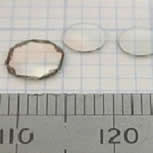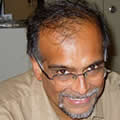A grant has been awarded to a consortium comprising Element Six Ltd., Dynex Semiconductor Ltd., and the University of Cambridge to develop diamond manufactured by CVD (Chemical Vapour Deposition) for novel power electronic components.

This Carbon Power Electronics Programme (CAPE) aims to develop the basic technologies for advanced high power electronic components using electronic grade diamond, is being funded under the DTI LINK Basic Technologies for Industrial Applications (BTIA) programme.
Element Six is the world's leading supplier of high quality superabrasives and industrial diamond materials and Dynex is one of the world's leading designers and manufacturers of industrial high power semiconductors.
"By bringing together Element Six, Dynex Semiconductor, and the University of Cambridge we have a unique opportunity to introduce a new technology to the field of power electronics," said Dr Steve Coe, R&D manager at Ascot-based Element Six Ltd. "This is one of a number of exciting opportunities that we are pursuing to commercially exploit the extreme properties of diamond in detector and electronic applications."

"Semiconductors are materials that can be switched electronically from being insulating to conducting, and are used extensively in devices that control electric power", explains Professor Gehan Amaratunga, who will be co-ordinating the research input from the Department of Engineering.
"A limitation with today's semiconductors such as silicon is that high voltage or high temperature can cause the material to switch its conducting state in an uncontrolled manner. Diamond is one of a class of 'wide band gap' semiconductors, with these materials much higher energies are required to change the conducting state. So compared to silicon, diamond will retain electronic control at high voltage and high temperature. Add to this the best thermal conductivity of any material and the highest carrier mobility of any wide band gap semiconductor, and diamond offers the possibility of electronic devices with far superior performance than any known today."

